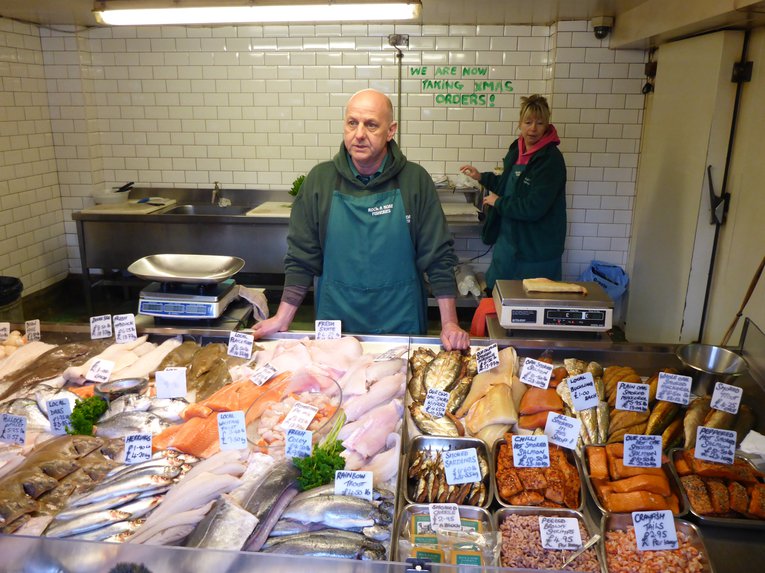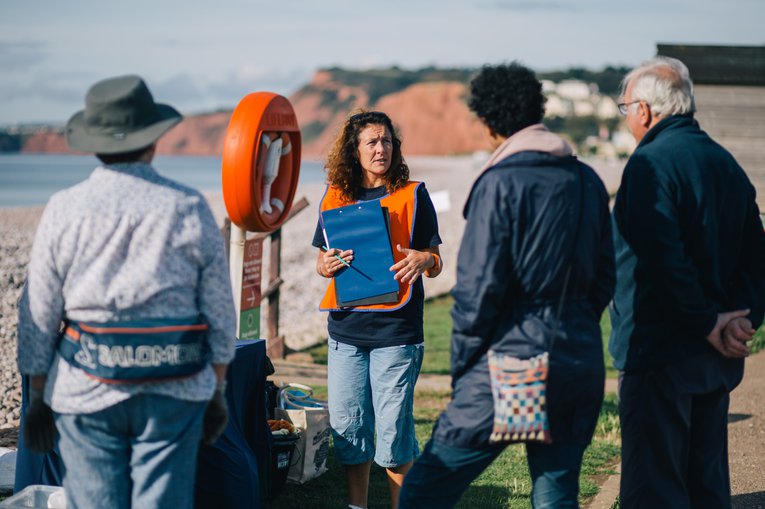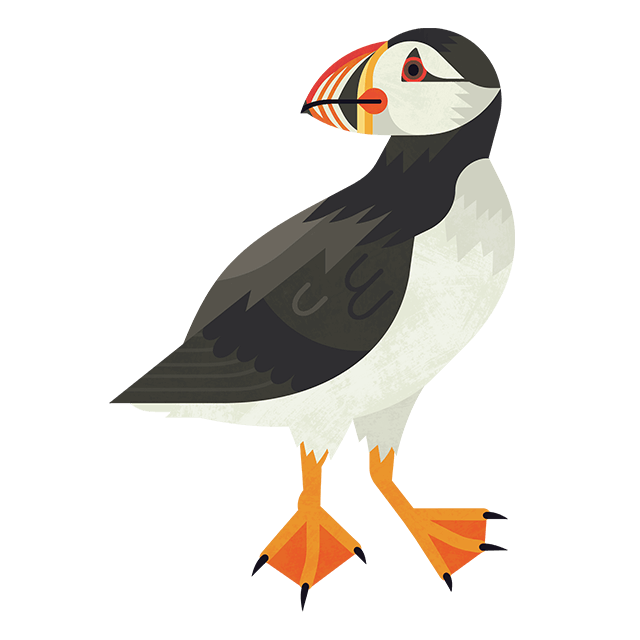
Sustainability, seafood and Seaspiracy
We promised to come back to those of you who asked us questions after watching Seaspiracy.
Our Head of Fisheries and Aquaculture answered some of your questions in our video, below. But we didn’t manage to get through them all! So, our team has responded to some follow-up questions. We hope they’re useful.
Is plastic pollution from fishing the biggest threat to our oceans?
There are many threats to our ocean – with plastic pollution being a major one. Our goal is to recover the health of our ocean and eliminate or lessen those threats. Specifically, by 2030 we’re calling for:
- A third of our seas to be truly protected, so nature can recover.
- Ocean pollution levels to show a clear downward trend.
- Our fish stocks to be at sustainable levels.
Is the fishing industry a problem when it comes to plastic pollution in our ocean? Absolutely. But there is no single source of this pollutant, and while some sectors create more waste than others – the scale of the issue is now so large we must look to reduce, reuse and recycle wherever we can.
Our research shows that there are a variety of plastic pollutants: discarded fishing gear from fishing vessels, illegal dumping by ships, sewage discharge, fly-tipping, and littering, even in urban areas.
Useful statistics:
- According to a 2018 study in Environmental Sciences Europe, on average, 80-90% of ocean plastic comes from land-based sources, including via rivers, ‘with a smaller proportion arising from ocean-based sources such as fisheries, aquaculture and commercial cruise or private ships’.
- More than 90% of plastic in Scottish seas typically come from Scottish littering on land. Scottish littering puts about 1,000 tonnes of macro plastic into Scottish seas each year, which is about 200 million pieces of macro plastic.
Why aren’t you suggesting that people stop eating seafood – or at least cut down on their consumption?
We welcome anyone and everyone who is fighting for the health and recovery of our ocean.
Ultimately it is everyone’s individual choice on whether they stop or eat less seafood. For years we have said that too much is being taken out of the sea and have campaigned against the threats that our ocean is facing, including for better fisheries management.
Our main advice has been and remains that if you do eat fish you should avoid those we call red rated. Red rated indicates that the fish are from the most unsustainable fisheries or farming systems. We recommend avoiding these fish and only eating those we call green rated. Green rated indicates the most sustainably caught or farmed fish. This way you eat those which aren’t under threat. Often this means using alternatives to the common favourites and so our Good Fish Guide also gives advice on swaps to make.
So, if you do eat seafood the most important thing is to consider which seafood you eat. If you cut down your consumption but still eat red rated fish that won’t help our ocean – however, stop eating red rated and only eat green, then we believe that will help.
When we choose sustainable seafood, it encourages supermarkets and restaurants to demand it from their suppliers. This demand can reward fishers and fish farmers who adopt good practices and encourage governments to improve management.
Over time, we’ve seen that the market demand for more sustainable seafood is encouraging real improvements in the management and operation of fishing and farming. If this didn’t happen, those fisheries would continue in a more unsustainable way anyway, and we want to prevent this. Increasing demand for responsibly produced fish will help ensure the marine environment is in the best condition possible, in order to support healthy and thriving seas, people and economies.

Credit: Ian Stewart via Shutterstock
What is ‘sustainable fishing’ and do you think it’s possible?
Sustainable fishing is essentially where fishing is at a level and done in ways that allow the marine environment to grow and thrive. It’s still a work in progress – we’re not there yet, but the closest measure from a fishing perspective is maximum sustainable yield. It’s a term often used, and means the level of fishing pressure a species population can sustain before it declines.
But we know that only 67% of stocks fished in UK waters are being fished at those levels or better – so for declining stocks there really needs to be a focus on recovery.
And recovery can only happen if there is some pressure on governments and industry to fish more sustainably. That’s where we come in! In our work on fisheries policy and advocacy with politicians and with our Good Fish Guide, which rates fish stocks not only on the fishing level but also on many other criteria, including fishing methods and impacts on the marine environment.
So, it’s all about MORE sustainable fishing with a goal of longer-term sustainability: to give fish, people and marine wildlife a chance.

Credit: Peter Richardson
What is the Good Fish Guide and how do you rate the seafood in there?
For those who choose to eat seafood we have created our Good Fish Guide, a tool that allows people to make informed decisions about what seafood they choose to eat. It brings together the best scientific advice available on how sustainable a variety of seafood is.
Our ratings are informed by a number of criteria representing key issues of environmental concern for the Marine Conservation Society. These include fish stock health, where the fish was farmed or caught and how, and issues such as bycatch and impact on the seafloor. Individual assessments against these criteria result in the combined overall ‘score’ which corresponds to a colour – green, amber or red.
The Marine Conservation Society’s ratings are informed and underpinned by scientific data and information from respected and peer-reviewed sources. New information about fisheries and farming methods comes to light all the time and as a result we update our Good Fish Guide database twice a year. Most wild capture ratings are reviewed annually. Farmed fish ratings are reviewed and updated on a three-year basis, with an annual “health check” for key species. New assessments and re-evaluations can also be triggered if there is a significant change that is likely to affect the environmental performance of the fishery or fish farm.

Credit: Georgie Bull
What are Marine Protected Areas (MPAs) and are they even effective?
Our team of experts at the organisation have been working on getting more, better, Marine Protected Areas for nearly 40 years - it’s an issue close to our hearts! It was also the subject of our recent Marine unProtected Areas report, focusing on the need for management of the UK Protected area network.
Marine Protected Areas act as underwater sanctuaries for animals like basking sharks and porpoise, and protect habitats like seagrass and kelp.
Numerous studies have shown that when sea life is left to recover, it thrives. That’s why we want the governments to commit to real protection of our Marine Protected Areas. Removing damaging activities like the use of bottom towed trawls from offshore sites that protect the seabed, which will allow them to recover. Better protections for our seas will contribute to a truly ocean-friendly model for fishing into the future, and are a fantastic tool for ocean recovery. But we need strong action from Government to make sure these MPAs aren’t just paper parks worth nothing more than the paper they’re written on.
We are part of a group of over 100 environmental organisations that are calling for a rescue plan for our ocean. This lays out concrete actions and deliverables in order to turn the tide for our ocean. We call for at least 30% of the ocean to be highly or fully protected by 2030, for a shift to low-impact fishing, securing a pollution-free ocean and the planning of activities that support the restoration of thriving marine systems. The coalition’s report can be found here.

Credit: Andrew Brown
How is your organisation funded? Are you subsidised by the fishing industry or any specific corporations?
It’s important to hold organisations to account and ensure they’re operating with transparency, which is what we always try to do.
The Marine Conservation Society was started over 30 years ago by a passionate group of divers, concerned by the declining health of UK seas. Since then, we’ve had to grow and adapt, but we remain transparent. We receive NO direct funding from ‘the fishing industry’ – as in people that catch fish.
But we do actively work with them, in order to create change through improving fisheries management.
We also have a firm ‘no reds’ stance in our Ethical Fundraising Policy and so we don’t accept funding from any business buying or selling any ‘Fish To Avoid’, which we review in depth annually with any company partner to ensure we are up to date.
Anyone who wants to know exactly who we receive funding from, can find out all that information in our Annual Impact reports. Information is also available on the UK Government's Charity Commission and Companies House web pages.
Who we are and what we stand for:
The Marine Conservation Society fights for the future of our ocean through people-powered action – with science on our side.
Today, our ocean is in poor health because of human activity. We’re determined to change this. We work with communities, businesses and governments and for more than 30 years, we’ve been the voice of the sea, defending our coastal habitats and species. We work towards a cleaner, better-protected, healthier ocean. One we can all enjoy.
Together, we can achieve our vision of seas full of life, where nature flourishes and people thrive.



